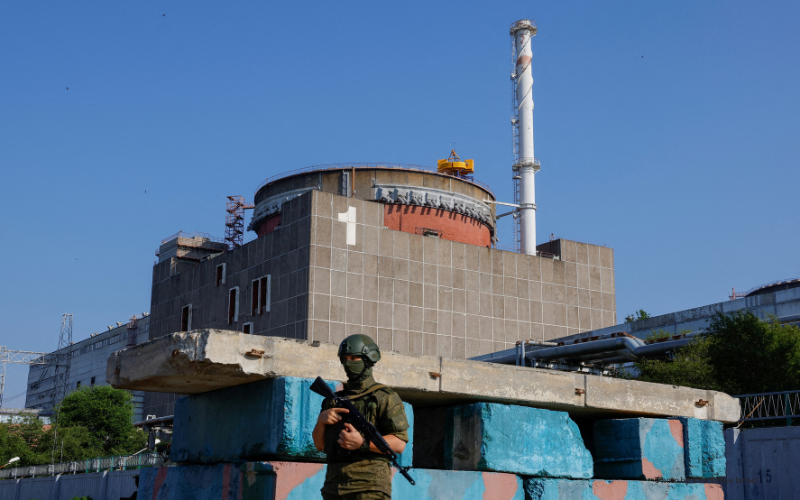For the first time in history, a nuclear power plant has become a military objective during a war. While previous military operations at the Iraqi Osirak reactor (1981), the Iranian Bushehr plant (1987) and the Slovenian Krško plant (1991) were somewhat ad hoc, the Zaporizhzhia nuclear power plant continues to be contested between the parties as a target in the war in Ukraine, a new and unprecedented situation for which the international community is unprepared. The nuclear research centres KINR in Kyiv and NSC-KIPT in Kharkiv have also been affected.
This highlights the lack of a ratified global agreement or treaty on non-aggression against nuclear facilities. The 1977 Additional Protocol I of the 1949 Geneva Conventions refers to international armed conflicts and in its Article 56 to certain restrictions on the protection of facilities with potential impact on population. The Russian Federation withdrew in 2019 its previous ratification of the Protocol. Among other countries, the USA never ratified the Protocol and explicitly rejects Article 56 in its Law of War Manual of the US Department of Defence. The 1979 Convention on the Physical Protection of Nuclear Material and Nuclear Facilities of the International Atomic Energy Agency (IAEA) does not cover military attacks on nuclear facilities either. Recent attempts to correct this situation at the 2022 Review Conference of the Nuclear Non-Proliferation Treaty and at the 2022 IAEA General Conference failed. A reactivation of the Nuclear Security Summit, which has been inactive since 2016, could also be an influential forum to seek consensus and begin to reverse the current situation.
The above points to a certain legal vacuum, which may formally mean that attacking a nuclear facility may not be illegal. There is, therefore, an urgent need for a global convention or treaty on non-aggression against nuclear facilities to prevent such facilities from being used as military targets. The very existence of international rules should prevent the normalisation of potential future attacks during armed conflicts, should delegitimise any warlike action on nuclear facilities and should deny the possibility of justifying such action.
The Zaporizhzhia nuclear power plant was taken over militarily in March 2022 by Russia and continues to be mainly operated by Ukrainian staff. After the outbreak of the war, the IAEA established seven pillars of nuclear safety and security to assess risks in wartime contexts. The IAEA inspectors sent by the UN Security Council to Zaporizhzhia in September 2022 concluded that all these pillars were compromised and recommended specific actions, plus the establishment of a safety protection zone without military equipment around the plant. Furthermore, the UN Security Council endorsed in May 2023 five concrete principles established by the IAEA essential for averting a catastrophic incident at the Zaporizhzhia plant.
The gradual loss of safety levels and margins in Zaporizhzhia is brewing a potential slow-motion disaster to the frustration of the international community. Certainly, the insecure electricity supply necessary to maintain its safety systems, the difficulties in maintaining its coolant inventory as a result of the recent destruction of the Kakhovka dam, the dispute over the plant with detonations on the war front and with mines placed between the site’s internal and external perimeter barriers, as well as the current insufficiency of staff to ensure adequate maintenance of all the equipment, are all elements that make the situation of the Zaporizhzhia plant unsustainable in the medium term. Indeed, in the event of a total external power outage, the plant must be operated with emergency diesel generators as a last resort, which occurred in October 2022 for the first time in the plant’s 37-year history, and which has already occurred seven times since.
Zaporizhzhia needs to be protected. A complete and definitive lack of coolant would cause a fuel meltdown accident with the release of radioactive products, which could have a transboundary and indiscriminate impact affecting various countries. Such a scenario would alter the course of the conflict, leading to possible external humanitarian interventions and escalating the confrontation.
The war in Ukraine also represents a major challenge for global nuclear safety and security since the standards and guides for nuclear safety and protection of the IAEA cannot be currently applied to nuclear facilities in armed conflicts. This war should legitimize the IAEA to monitor and support nuclear facilities in war contexts, with the UN mandate be rethought and adapted so that the IAEA Commission and Safety Standards Committees could fully develop the safety standards and guidelines for wartime environments.
In theory, nobody wants a nuclear accident, but for the first time, a nuclear power plant is being disputed as a military target on a war front, with both contenders accusing each other of misinformation and of preparing sabotage or terrorist actions at the power plant. With various safety margins decreasing, Zaporizhzhia is in a kind of grace period that is not infinite. A possible slow-motion disaster has been brewing for a long time and the world must be able to act now before it happens.
*This is a summary of an extensive paper on the subject written by Dr. Zurita and published by FOGGS – for the full paper see here.



